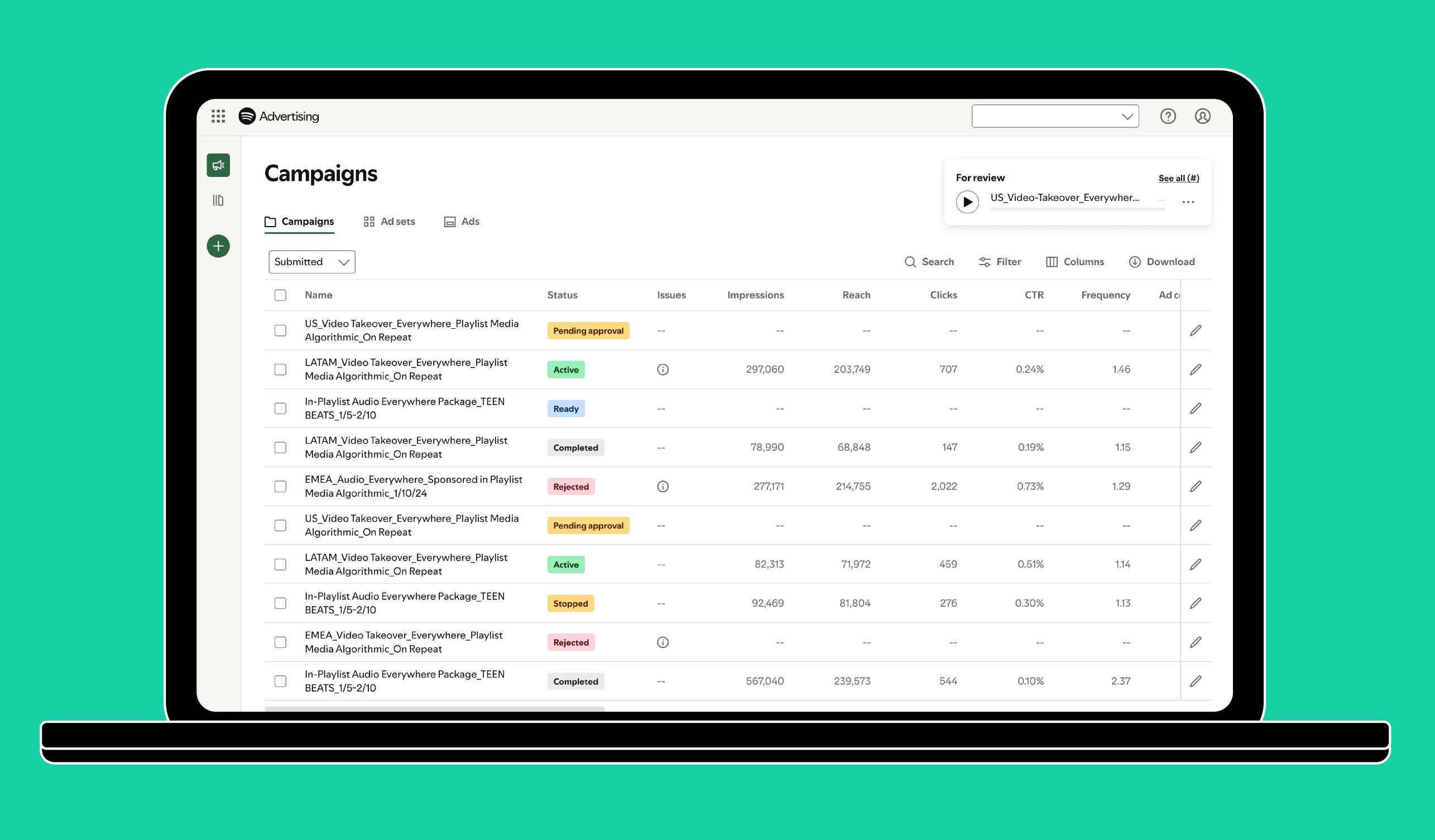
Spotify revamped its self-serve ad tool, Spotify Ad Studio, with additional features to help advertisers track results on the platform and reach their target audience more effectively.
The tool – which is now called Spotify Ads Manager – gives advertisers more choice when it comes to the audiences they want to reach and test on the platform, as well as an audience management space, which allows marketers to manage their saved audiences.
The platform also features new advertising formats, including Canvas, a short looping video that advertisers can add to each track, as well as an opt-in video, which allows brands to appear in the foreground next to the music content the user is listening to. Spotify also recently introduced new tools to measure the performance of ads on the platform.
These updates come after the company announced year-over-year ad revenue growth of 13% in its Q2 earnings report, released this week.
“With significant double digit growth in revenue from our self-serve ad platform, the new Spotify Ads Manager is one way we are continuing our investment in advertising as a long-term growth driver,” the company said. “Unlocking opportunities for advertisers across the entire marketing funnel – from brand advertisers to SMBs focused on performance – is a critical lever to achieving this.”
Spotify posted a quarterly profit slightly above analysts’ expectations: its revenue rose 20% to €3.8 billion. It reported net income of €274 million, and earnings of €1.33 per share, which beat analysts expected earnings of €1.04 per share. The company’s number of paying subscribers also increased by 12% to 246 million, and monthly active users grew 14% to 626 million.
In the last year, the streaming service has looked to reduce costs through layoffs and cuts to its marketing budget, while also trying to grow its user base with new investments, such as a higher-priced audio bundle that includes music, podcasts, and audiobooks. During the earnings call, Spotify CEO Daniel Ek said the company is in the early phase of bringing high-fidelity support to the platform, which will lead to higher subscription prices.
“The plan here is to offer a much better version of Spotify,” Ek said on the call. “Think something like $5 above the current premium tier. So it’s probably around a $17 or $18 price point, but sort of a deluxe version of Spotify that has all of the benefits that the normal Spotify version has, but a lot more control, a lot higher quality across the board, and some other things that I’m not ready to talk about just yet.”


















